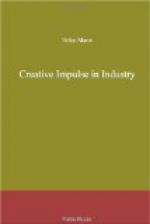The attitude of Mr. Taylor and his followers, however, differs from that of the ordinary manager who maintains an irritated disregard of the disturbing elements instead of accepting them and, as far as is consistent with business principles, allaying or cajoling them. The significant contributions which scientific management has made are in line with the experiments originally introduced by Mr. Taylor. They call for the study of each new task by the management, for discovering the economy in the expenditure of labor energy before it is submitted to the working force; the standardizing of the task in conformity with the findings; the teaching of the approved methods to the working force; the introduction of incentives which will insure the full response of labor in the accomplishment of the task. Beside the standardizing of tasks and the relating the wage to the fixed standard, scientific management has made intensive experiments in the scheduling of the various operations to be performed, which are divided among the working force, so that no one operation is held up awaiting the completion of another. It has shown in this connection that work can be “routed” so that the time of workers is not lost. The most successfully managed factories also plan their annual product so that employment will be continuous. They have discovered that the periods of unemployment seriously affect the personnel of a labor force and they estimate that the turnover of the labor force which requires the constant breaking in of new men is an item of serious financial loss. The Ford Automobile Works at one time hired 50,000 men in one year while not employing at any one time more than 14,000. They estimated that the cost of breaking in a new man averaged $70.00. To reduce this




